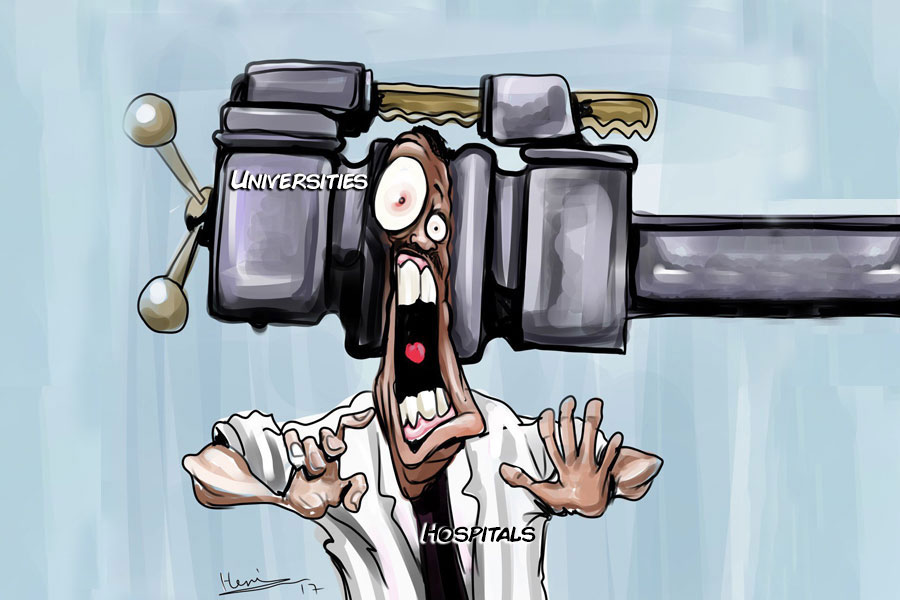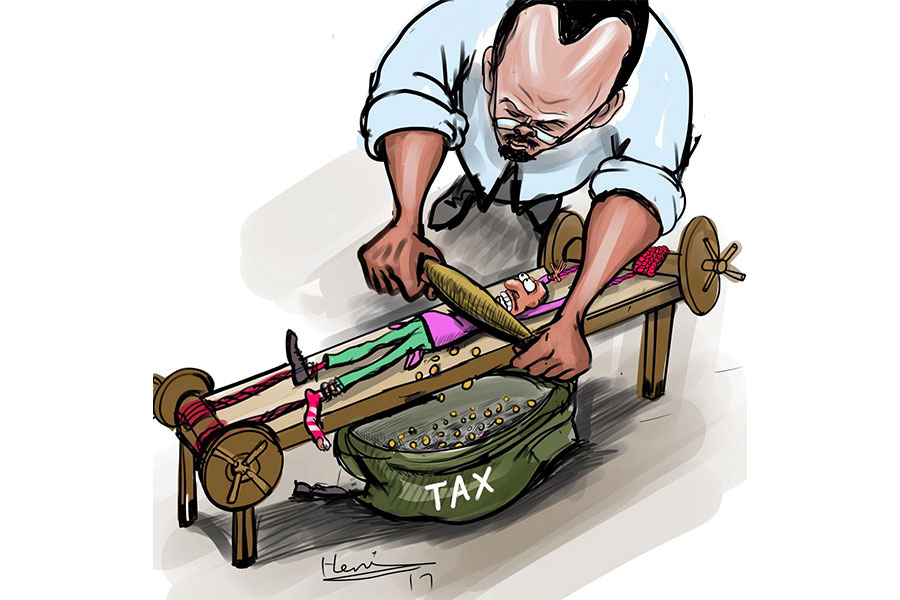
My Opinion | Jun 17,2023
A slew of official public processions, albeit almost all of them for former Ethiopian leaders, passed through our city streets in the last few months. Ethiopians are not accustomed to witnessing military parade pageantries and processions. The re-inception of the whole idea of military pageantry comes after a hiatus of several decades following the fall of the imperial regime. It was resurrected at the funeral procession of the late prime minister, Meles Zenawi in 2012.
Last week, however, the funeral procession for the Former President Negaso Gidada and the coronation pageant of Thailand’s newly crowned King, Maha Vajiralongkorn, made for a spectacular and stark juxtaposition of public ceremonies across two worlds.
The funeral cortege for Negasso started somewhere in the Mekanissa area attended by a military honour guard, a military brass band and an assortment of federal and city police officers in regular uniforms. The black hearse limousine was draped with flowers and images of the former president, somehow placed askew around the hearse, and was followed by close family members and friends. The tail was made up of a contingent of armed Federal Police on a military Toyota truck, also in regular uniforms, who preceded a long line of three-deep Land Cruisers.
At the front of the procession, there was another contingent of an army platoon in dress uniforms that took position to the right and left of the cortege, a military band placed at the centre, a few mounted officers, and a lone white police vehicle and a group of motorcycled-officers with flashing lights leading the procession. It all seemed a little bit too hurried, unpracticed, more like a New Orleans funeral jazz band than a public, state-sanctioned ceremony.
In Bangkok, the King appeared seated on a golden palanquin carried by soldiers in immaculate ancient fighting uniforms. The procession was a precision drill carried out by well-practiced, well-trained soldiers schooled and choreographed on their performance - for that is what it was, a performance. They were aligned and arranged to display their colours and movements to the fullest advantage, the soldiers veering nigh an inch out of their formations. There was almost a mesmerising sense of unity and discipline. The different brigades flowed synchronously as if they were in a battlefield manoeuvre, one formation taking the place of another without the slightest hitch.
The parade seemed like a hypnotic show where the individual Thai soldier in the drill has surrendered himself to the unified group of his comrades in total obedience to orders - as every soldier should. They also seem to be aware that they are invoking the awe and admiration of an entire world and the pride of an adoring nation.
In Addis Abeba, when the procession reached Karl Square, named for Karlheinz Böhm, the Austrian-German actor and philanthropist who worked in Erer Valley and laid the foundation for his “help for self-help” program, the whole cortege came to a standstill.Here, the military band and the honour guards dispersed rapidly, the mounted guards shooed their stallions to the side and the Land Cruisers picked up the mourners from the rear. Now, the procession assumed its typical urban expression, and the motorcade sped to Millennium Hall, where officials and dignitaries are assembled for a formal memorial.
Ethiopia is straining to have a proper state ceremony for formal occasions including its national holidays. Military drill as part of public pageantry can instill pride and show the citizens how modern and disciplined their military really is. Although a regular parade in public display does not provide any useful function on the battlefield, it instills the public with confidence in the nation's military functions.
It is hard to imagine the plethora of soldiers that roam our streets in disheveled uniforms; soldiers in ruffled military fatigues hanging out for hours in the poolrooms of their neighbourhoods; and young sentries who leisurely lounge around sitting on chairs with assault weapons on their laps in front of government buildings would inspire confidence and pride in the citizens.
In Debre Berhan, there is a contingent of the government’s anti-terrorist force, that has occupied a dilapidated building just south of the city. Within the camp, the young recruits spend their days trimming each other’s hair, loafing around on plastic stools, and taking turns coming in and out of a line of poolrooms located just across from the encampment.
The poolrooms are overseen by young ladies who collect the fees and keep the troops entertained all day long. The recruits seem to have no other function other than occasional patrols. They should be given assignments to maintain their facilities, conduct drills or perform any other duties.
This pattern is not uncommon among the various units across the regions. It is as if soldiers have left behind their active duties at boot camps and are now in a waiting pattern that requires no more effort than to wake up each morning and loaf around until it is time to go to bed again.
At the Debre Berhan camp, there are no training or parade grounds to conduct daily physical conditioning or enough space to receive hands-on training for police work, marksmanship or other useful assignments. The physical location of the camp itself and its environs precludes any meaningful functions that can offer recruits any training or to establish a career path after their service in the military.
Our soldiers should be trained and required to maintain high standards and professionalism in their conduct, demeanour, dress and appearances. Their uniforms should be neat, serviceable and well-fitting. Soldiers must project a military image that leaves no doubt in the minds of the citizens that the standards, orders and disciplines are always kept up. As for the parades, pageantry and processions – there are no substitutes for practice and drills.
PUBLISHED ON
May 11,2019 [ VOL
20 , NO
993]


My Opinion | Jun 17,2023

Viewpoints | Jun 07,2020

Commentaries | Nov 21,2018

Verbatim | Nov 21,2020

Editorial | Dec 26,2020

Viewpoints | Nov 21,2018

Commentaries | Feb 12,2022

Viewpoints | Feb 20,2021

My Opinion | Jul 06,2019

Radar | Aug 28,2021

Dec 22 , 2024 . By TIZITA SHEWAFERAW
Charged with transforming colossal state-owned enterprises into modern and competitiv...

Aug 18 , 2024 . By AKSAH ITALO
Although predictable Yonas Zerihun's job in the ride-hailing service is not immune to...

Jul 28 , 2024 . By TIZITA SHEWAFERAW
Unhabitual, perhaps too many, Samuel Gebreyohannes, 38, used to occasionally enjoy a couple of beers at breakfast. However, he recently swit...

Jul 13 , 2024 . By AKSAH ITALO
Investors who rely on tractors, trucks, and field vehicles for commuting, transporting commodities, and f...

Aug 2 , 2025
At daybreak on Thursday last week, July 31, 2025, hundreds of thousands of Ethiop...

Jul 26 , 2025
Teaching hospitals everywhere juggle three jobs at once: teaching, curing, and discov...

Jul 19 , 2025
Parliament is no stranger to frantic bursts of productivity. Even so, the vote last w...

Jul 12 , 2025
Political leaders and their policy advisors often promise great leaps forward, yet th...